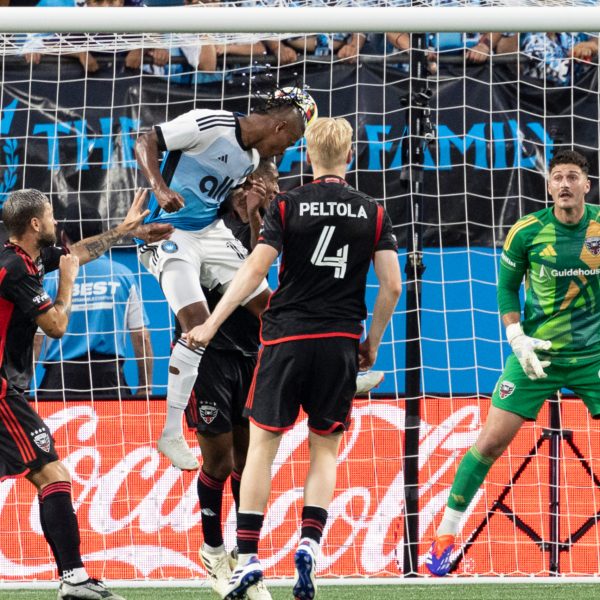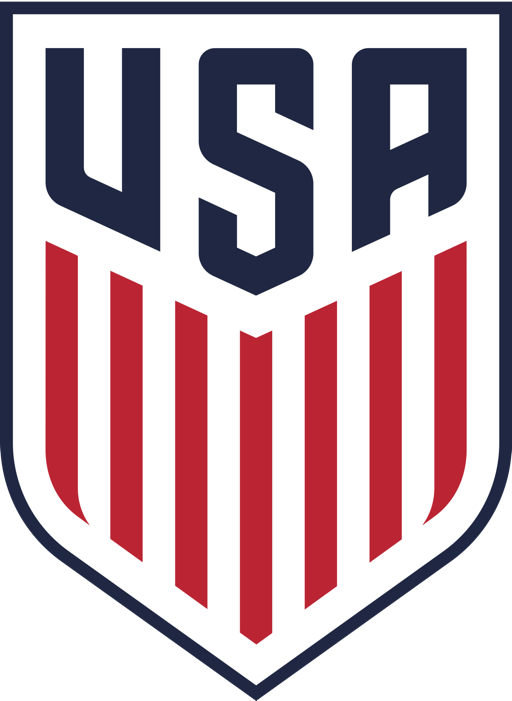
Credit: Jeremy Reper - ISIPhotos.com
The 2024 Copa America starts for the USMNT on Sunday, June 23 against Bolivia (5pm ET – FOX) at AT&T Stadium in Arlington, Texas. The game comes after split results in two warmup friendlies against CONMEBOL giants. Namely the 5-1 loss to Colombia in Landover, Maryland and the 1-1 draw with Brazil in Orlando. What we take from those two games is an open question, with the United States struggling late against Colombia while putting together a complete game against Brazil a few days later.
After reconvening in Dallas in advance of their group stage opener, the United States squad knows who they are in this tournament. They’re a Concacaf power trying to show that they can get the results in games that count against the level of competition provided by CONMEBOL. The rest of group C should be asking different questions about the USMNT. Is it the squad that left plenty of opportunities against Colombia with an overreliance on the high press early and issues with choices late in the game? Or is it the team that stifled a Brazilian attack that took 25 shots with a dozen on goal?
Bolivia – June 23
Those questions will likely remain for the United States regardless of what happens against Bolivia. The USMNT’s first group C opponent played three warmup friendlies in the United States, a 1-0 loss to Mexico in Chicago, A 3-1 loss to Ecuador in Chester, Pennsylvania, and a 3-0 loss to Colombia in East Hartford, Connecticut last Saturday. Obviously, it’s that last game that would seem to provide the best comparison. Unfortunately for that line of thinking, both teams played a man down from the 68th minute, lacking the same late game push from Colombia.
What is interesting about Bolivia’s three friendlies is that they gave up no goals from the run of play after the 47th minute. Whatever Bolivia encountered, it would appear that their adjustments tended to work. It’s also worth considering that they had 59% of the possession against Mexico back on May 31, 46% against Ecuador, and dropping to 35% against Colombia. By comparison, the USMNT had 53% of the possession against Colombia, dropping to 39% against Brazil. Again, the results don’t necessarily draw a straight line between holding onto the ball and creating opportunities.
Against Bolivia, what the United States plays with is the pressure of being the favorite and the expectation that this game represents three points to lose. That’s not a new scenario for an elite Concacaf team, but it comes against the clash of regional styles that can disrupt a group.
Three years ago, Bolivia finished the bottom of a five-team group where the other four teams advanced. They lost all four of their group stage games, giving up ten goals and scoring two. With respect to Bolivia, one of those goals was against eventual champions Argentina in their group A finale, a 4-1 loss, and they played Chile and Uruguay close.
Panama – June 27
The other Concacaf team in the group opens against Uruguay in Miami on Sunday, with the second game against the United States in Atlanta on June 27 (6pm ET – FOX). Panama had a different route to the Copa America over the June window, playing in the second round of World Cup qualifiers. They shut out Guyana 2-0 on June 6 and beat Montserrat 3-1 on June 9. That left time for one friendly against CONMEBOL opposition, a 1-0 loss to Paraguay last Sunday in Panama City.
Panama won the respect of Concacaf last summer, knocking the USMNT out on penalties in the semifinal round before losing 1-0 to Mexico in the final. Those were big games in big American stadiums, just like what Panama faced in the Concacaf Nations League semifinals during the March international window. They lost that semifinal 3-0 to Mexico and then lost the 3rd-place game 1-0 to Jamaica.
Uruguay – July 1
Any preview of group C probably has this as the showdown between the two teams likeliest to advance with 1st-place in the group on the line. We’re all aware that group play in international tournaments has a tendency to surprise, and Uruguay will be playing through its own scenarios against Panama and Bolivia.
Uruguay’s pre-tournament friendlies tell one part of the story, a 0-0 draw at Costa Rica on May 31 and a 4-0 win over Mexico in Denver on June 5. With a March window that saw them play at Basque in a non-FIFA friendly and then against Ivory Coast in Lens
It’s the March window that raised interesting questions about Uruguay that may resonate in group C. Playing in Lens, France, Uruguay lost 2-1 to Ivory Coast on March 26 with a mixed squad that featured Brian Rodriguez and Facundo Pellistri on the wings in the first-half. That game saw Uruguay trailing from a 9th minute own-goal before Federico Vinas equalized in the 77th. Ivory Coast went ahead for good in the 84th. It’s always tempting to put more weight on a friendly result when it suits a narrative, but Uruguay demonstrated that they could get a late equalizer with a different version of their attack. While it’s certainly fair to underline Ivory Coast’s even later winner, this was a game that also showed how Uruguay could keep its ideas with different players under coach Marcelo Bielsa.
While no technical staff is likely to underestimate Bielsa as a tactician or the quality of players in his squad, Uruguay represents a series of difficult problems for group C opponents to attempt to solve. So does the United States, underlining both teams as the issues for the rest as group play commences on Sunday.
Photo by Jeremy Reper – ISIPhotos.com
All stats are taken from game reports.






